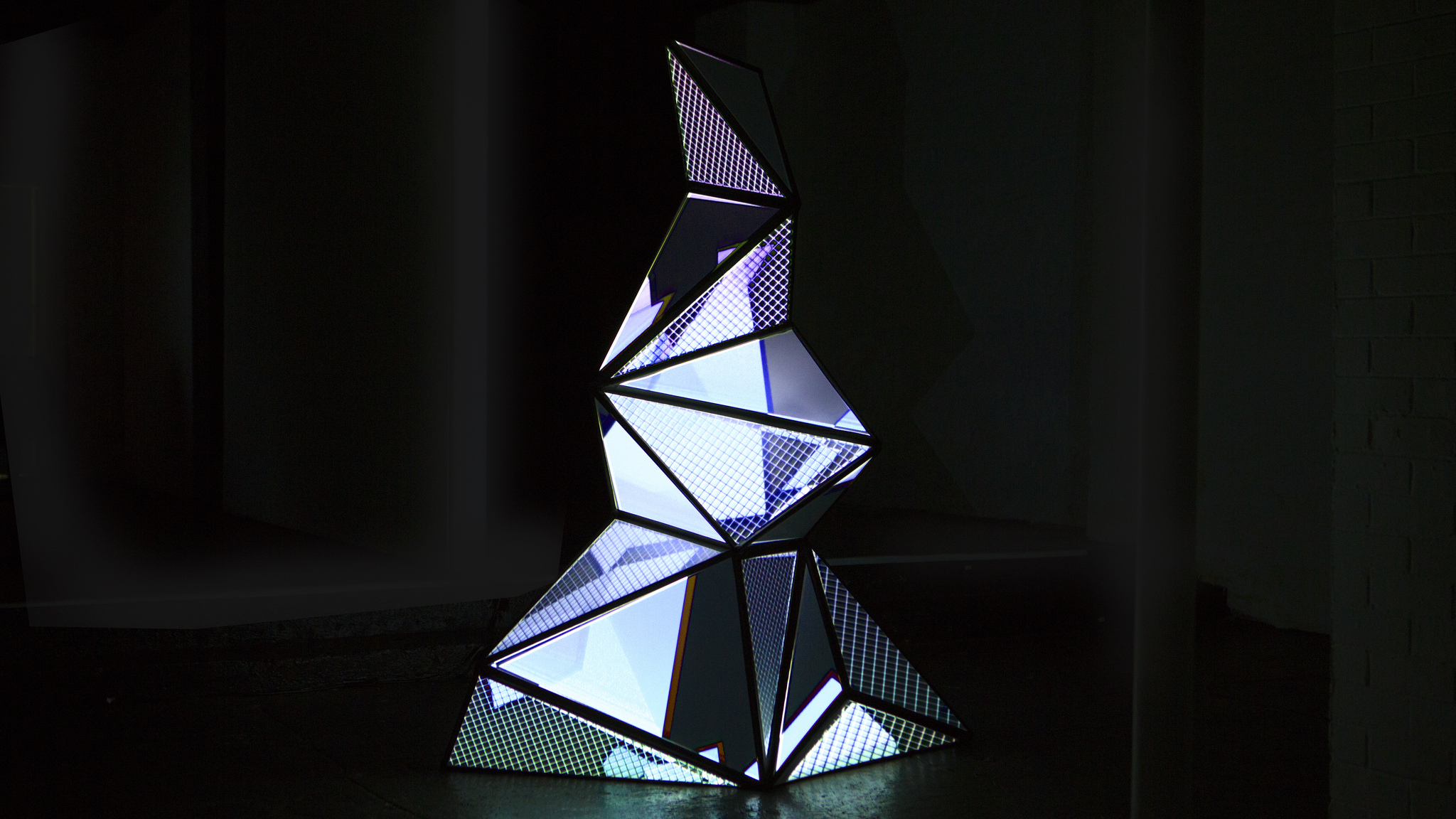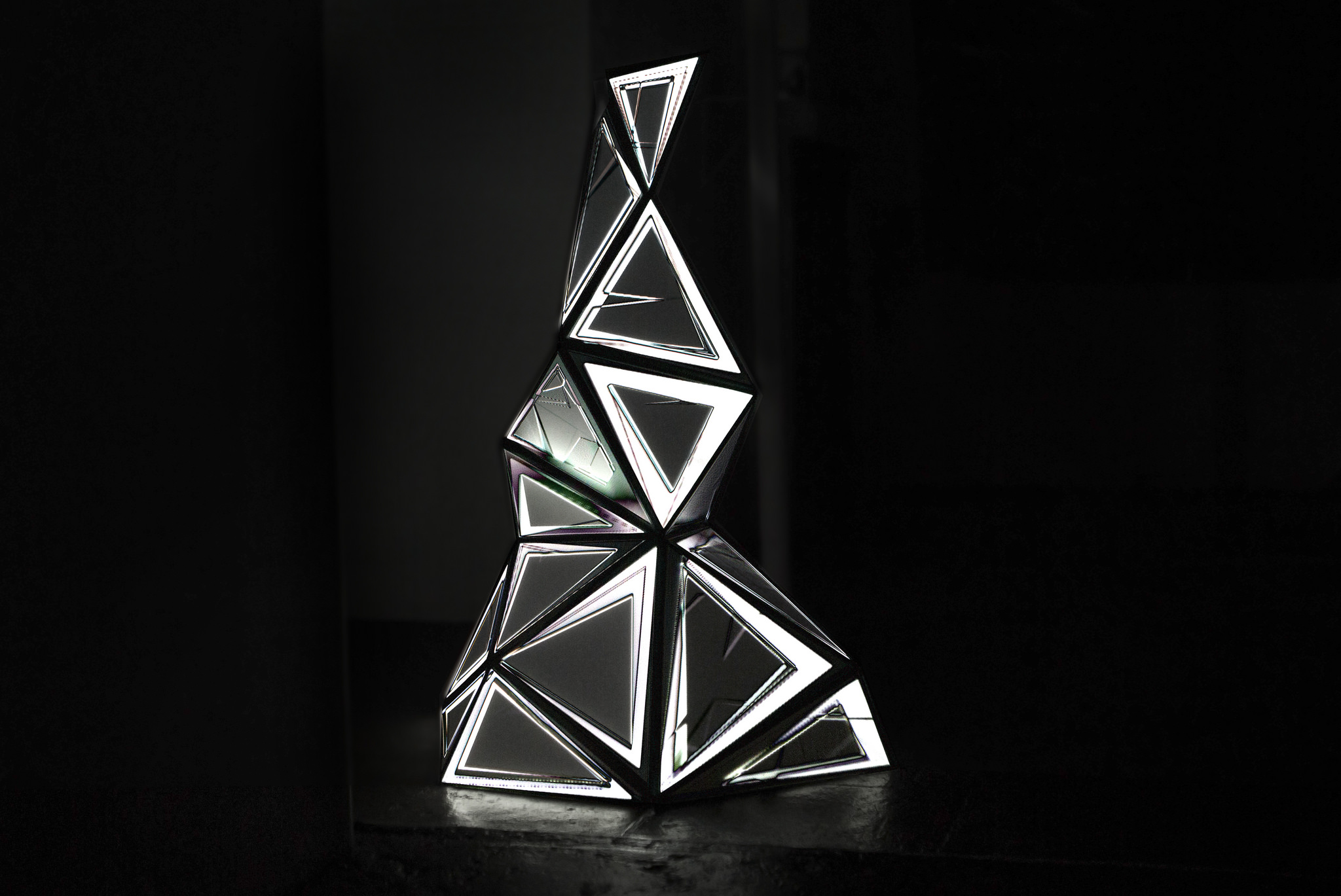Vertex




‘Vertex’ experiments with the combination of digital and physical processes. Designed in a CAD environment, the work departs from the more formal geometric structures of my previous installations. Pursuing my interest in the relationship of spatial complexities, the main goal with this sculpture was to develop a shape that is clearly non-linear and apparently structurally unsound in its form. Protruding into its surrounding space, the piece aims to redefine its environment and create a sense of spatial convolution.
The sculpture seems to exist in a way that does not clearly position it within its space in a formal context. Made up of shards arranged to pierce the immediate surroundings, it appears fixed yet broken, conveying a sense of controlled ‘paused’ chaos. In this way, the form acts a sculptural adaptation to contemporary deconstructivist architecture. Through its geometric abstraction and acute angular properties, it suggests a metaphysical seepage of the form into its environment.
The work is shaped in a way so it can be fully illuminated with just two projectors. The process of ‘projection mapping’ allows multiple animated elements to be isolated to specific sections of the sculpture. By using this technique not only can the edges of the sculpture can be traced with light and alternating video textures applied to each of its individual faces but animations can seamlessly twist and flow in 360°. 3D elements such as Voronoi divisions, artificial lighting and shadowing derived from the CAD model can be projected back onto this physical counterpart, giving the appearance of digital skin and raising the idea of the existence of a 2.5D ‘interdimension’, a clear departure from the confines of the screen.
‘Vertex’ expresses my interest in the deep abstraction of form through the combination of 2D and 3D elements, and digital and physical dimensions, and how these realities are situated in relation to consciousness. It also explores what forms of interplay can exist between the physical, digital and mental aspects of what we do.
By creating an abstract sculptural work that includes these new types of software techniques, I am hoping the viewer can appreciate its aesthetics while simultaneously being curious about its origin, properties and meaning. This may lead to some consideration of the future potential for technological processes in fine arts, not only in the context of a gallery space but also in relation to the viewer’s own personal realm of consciousness.